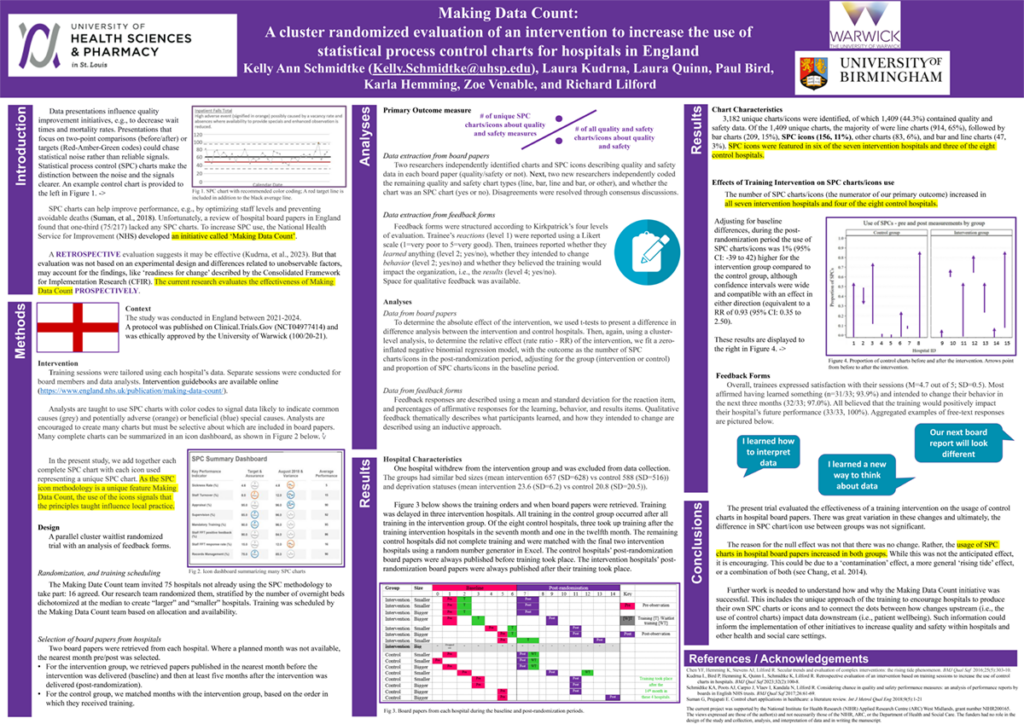
Introduction: Conversations between hospital board members, middle managers, and frontline staff often revolve around performance metrics, e.g., wait times and hospital-acquired infection rates. Where presentations focus on two-point comparisons (before/after) or targets (e.g., visualized with Red-Amber-Green (RAG) codes), initiatives could chase statistical noise rather than sound statistical signals of poor or superior performance. Statistical process control (SPC) charts make this distinction clear. A training intervention was created to improve the uptake of the SPC charts by hospitals in England. The current study evaluates the effectiveness of that training against the background of a prolonged national initiative to encourage the adoption of SPC charts.
Methods: A parallel cluster randomized trial was conducted with hospitals in England that had not yet adopted the SPC methodology. Half were randomized to the training intervention and half to the control. Our primary analysis compares the difference in SPC chart use in hospital board papers between groups in a post-randomization period (adjusting for baseline). Trainees also completed feedback forms.
Results: 15 hospitals of similar sizes and deprivation statuses completed the study. SPC chart use increased in both groups (29 and 30 percentage points respectively). Thus, there was no statistically significant difference between the intervention and control hospitals in their use of SPC charts in the post-randomization period (average absolute difference 1% (95% CI:-39 to 42). In the feedback forms, 93.9% (N=31/33) of trainees affirmed learning and 97.0% (N=32/33) had formed an intention to change their behavior.
Impact: Control chart use increased in both intervention and control hospitals. While this was not the anticipated finding, it is encouraging. The finding is consistent with a rising tide and/or contamination effect, such that the culture of control chart use is spreading across hospitals in England. Further research is needed to determine the characteristics of the training or culture that facilitated uptake to inform future quality and safety initiatives nationally and internationally.
Organization: University of Health Sciences and Pharmacy
Schmidtke KA, Kudrna K, Quinn L, Bird P, Hemming K, Venable Z, Lilford R